Iberia, Iveria (Georg. იბერია, ივერია) – the ancient name of Eastern Georgia (Kartli). The territory of Iberia from ancient times was inhabited by East Georgian kindred tribes – “Iberians” (“Eastern Iberians”). The locals themselves called their country – Kartli, taking the name of the country from the name of the mythical ancestor Kartlos.
Already in the Hellenistic period, the word Iberia denoted a certain political unit (state), which was located on the vast territory of the south and east of present-day Georgia. In the pre-Hellenic period, many inter-tribal unions were created here and the beginnings of an early class state formation were already observed.
Day 1. Arrival
Arrival at the Tbilisi International Airport. Transfer to the hotel. Time at leisure.
Visiting the Pantheon of Georgian writers and public figures– necropolis in Tbilisi, where many of the famous writers, artists, scientists and national heroes of Georgia are buried. It is located on the slope of Mount Mtatsminda and was officially opened in 1929. Since that time, many prominent Georgians have been buried or reburied here. A little higher there is an amusement park and a large observation deck, from here the whole of Tbilisi is visible at a glance.
Walk along Rustaveli Avenue. In order to learn more about Tbilisi and be able to touch its traditions, you need to take a walk along Shota Rustaveli Avenue. The avenue is a combination of old and modern buildings, art galleries, exhibition halls, theatres, malls, cafes, restaurants and gift shops. Shady plane trees, monuments to prominent Georgians, front facades with stucco, bronze men, streets running up – all this is the central Rustaveli Avenue.
Day 2. Tbilisi - Dzalisi - Tsitsamuri - Mtskheta - Tbilisi
Visiting the excavations of the ancient hillfort of Dzalisi – on the banks of the Narekvavi River, famous for its ancient Roman mosaics. This city was known to the Greek geographer Claudius Ptolemy, in his gazetteer of the 2nd century AD. e. it is called the city of Zalissa or Dzalisa and is designated as one of the main cities of the ancient Iberian kingdom. It was a beautiful, large city with an area of more than 100 hectares.
Visit of Tsitsamuri (Sevsamora) – according to archaeological materials, Tsitsamuri has been inhabited since the middle of the 1st millennium BC. Near the city of Mtskheta, archaeologists have found the ruins of an ancient Iberian acropolis. Tsitsamuri was part of “Didi” (large) Mtskheta and was possibly connected with it by a bridge. However, Tsitsamuri had its own access roads from the north and east. Archaeological evidence confirms that this territory was developed as early as the 2nd millennium BC.
Visit to the ancient hillfort of Armaztsikhe (Bagineti). For centuries, Armaztsikhe was the acropolis of the Iberian kingdom. The heyday of Armaztsikhe (Bagineti) fell on the Hellenistic period (IV-III centuries BC). However, with the transfer of the capital of Georgia from Mtskheta to Tbilisi in the 6th century, it lost its significance and was completely abandoned in the 730s after the arrival of the Arabs. Now the fortress is in a ruined state, but some fragments have survived to this day.
Visit to the Samtavro necropolis. The finds in the necropolis have created a reliable chronological scale for reconstructing the history of both Mtskheta and the culture of the East Georgian tribes. About three thousand burials of different times were found in the burial ground (middle of the 3rd millennium BC – 9th century AD). It is the finds at the site of the Samtavro necropolis that confirm the existence of an ancient settlement here. The burial ground gave archaeologists the richest material about the ancient history of not only Mtskheta, but also Georgia as a whole.
Visit to the Samtavro Monastery. The history of the monastery begins in the 4th century and is associated with St. Nino, one of the most revered saints in Georgia. After arriving in Mtskheta, St. Equal-to-the-Apostles Nino found a secluded place near the northern border of Mtskheta, where she settled in a hut in blackberry bushes (surviving to this day) and continued her sermon. Samtavro Monastery is included in the UNESCO World Heritage List.
Visit of Svetitskhoveli – The temple, with some changes that has survived to this day, was built at the beginning of the 11th century. Svetitskhoveli keeps the most important Orthodox relics: the tunic of the Lord, the font of King Mirian, a particle of the relics of the Apostle Andrew the First-Called, the robe of the prophet Elijah, the relics of the holy Georgian kings. Svetitskhoveli Temple is included in the UNESCO World Heritage List.
Visit of Jvari – Georgian monastery and temple of the 7th century, one of the masterpieces of architecture for the perfection of architectural forms and the first World Heritage Site in Georgia. Jvari (lit. “cross”) is located on the top of a mountain at the confluence of the Kura and Aragvi near Mtskheta – where, according to historical sources (“Conversion of Georgia”, “Life of the Kartli kings”), St. Equal-to-the-Apostles Nino erected a cross. Jvari Monastery is included in the UNESCO World Heritage List.
Overnight in Tbilisi.
Day 3. Tbilisi -Imiri - Atakhlo - Dmanisi - Bolnisi - Tbilisi
The region of Kvemo Kartli was formerly known as Trialeti. This region of Georgia is inextricably linked not only with the history of the country since ancient times, but also with the history of all mankind.
It was here that during the excavations the five oldest hominid skeletons in Europe were discovered, attributed to the species Homo Georgicus, about 1,800,000 years old, it was here that the remains of clay vessels with seeds of cultivated grapes dating back to the 6th millennium BC were found, which allowed scientists to talk about Georgia as the birthplace of winemaking.
Visit of Imiri — Not far from the village of Imiri (municipality of Marneuli), the oldest (VI millennium BC) settlement of the Neolithic period, the oldest grape seeds dated to the 6th millennium BC were discovered. According to morphological and ampelographic features, they belong to the cultivated variety of the vine vitis vinisfera sativa. The National Museum reports that as a result of a comprehensive study, it was established that for the first time a person domesticated a wild vine in Georgia.
Visit to the hillfort of Arakhlo – cultural monument of Shulaveri-Shomu of the early Eneolithic era (5th – 4th millennium BC). This is one of the earliest agricultural settlements known to science and, perhaps, the oldest inhabited place in all of Georgia. Here were found metal agricultural objects, a patterned tool made from a forked deer horn; a small figurine, in the form of a woman’s head, made of gravel; clay figurine of a bull; bronze arrowheads; stone coffins; ruins of a bathhouse and residential buildings; various colored and ordinary ceramic dishes.
Visit to the hillfort of Dmanisi – this area was already inhabited in the Bronze Age, but during archaeological excavations more than 20 years ago, paleontologists discovered near Dmanisi the remains of one of the subspecies of Homo erectus, Homo erectus. The age of these fossils is more than 1.8 million years, which allows us to consider them the first representatives of the human race in Europe. Name from Latin Homo georgicus, translated as “Man from Georgia”
Visit to the Sioni of Bolnisi. A similar type of temples in Georgia began to be erected by the end of the 5th century. Bolnisi Sioni is the very first basilica built in Georgia and still preserved. Surprisingly, today the temple has reached almost unchanged. The construction of Sioni coincides with the reign of the legendary king Vakhtang Gorgasali. On the eastern façade of the basilica there is a cross – later called the Bolnisi Cross – which is depicted on the modern flag of Georgia.
Visit of Bolnisi – city with different names: Katarinenfeld, Luxembourg and currently – Bolnisi. In past centuries, there were German villages in the Kvemo Kartli region. The German history of Bolnisi began in 1818 when the Germans were evacuated from Swabia. The German settlement was originally called Katarinenfeld. The houses have an unusual shape, which is not typical for the architecture of Georgia.
Overnight in Tbilisi.
Day 4. Tbilisi - Grakliani - Urbnisi - Uplistsikhe - Tsikhia-gora - Tbilisi
Kartli is one of the main historical and geographical regions of Georgia, the cradle of its statehood. The largest and most populated province in Eastern Georgia. In IV-III centuries. BC e. the kingdom of Kartli was formed with the capital Mtskheta. The ancient eastern Georgian kingdom of Kartli, also known as Iberia, adopted Christianity as its official religion in 337 AD.
Visiting to the Mount Grakliani – multi-layered archaeological complex. Archaeologists have proved that continuous development on its territory took place over 300 thousand years – from the Stone Age to the Roman period. During archaeological excavations, there was not a spontaneous settlement here, but an organized society that respected traditions and created aesthetic objects. During excavations on Grakliani Hill, scientists discovered an inscription from the 11th-10th centuries BC. e., it can change the course of world history.
Visiting of Uplistsikhe – cave city, an important religious, cultural and political center of the Hellenic and Antique periods of history (IV BC – IV AD). Before the adoption of Christianity by Iberia, Uplistsikhe was the religious center of Iberia. The uniqueness of the monument lies in the fact that, thanks to its structure, it has preserved the remains of architectural and religious buildings built over several millennia.
Visit to the ancient hillfort of Urbnisi – the oldest, extinct city of Georgia, once located on the right bank of the Kura River, on the so-called Khizanaant Mountain. From the 2nd century BC e. – the city, the second most important in Iberia after Mtskheta. The Georgian chronicles mention Kartli (Iberia) as a significant fortified center of the eastern Georgian kingdom, which became a city in ancient times. As a result of recent archaeological excavations, the remains of structures of the same type as in Mtskheta, dating back to about the 4th century BC, have been revealed. BC e.
Visit to the ancient hillfort of Tsikhia Gora – one of the first hillfort of its kind in the Transcaucasus. Judging by the period of ancient existence (IV – III centuries BC), the city of the Iberian kingdom. According to another opinion, it was something like a temple community: a settlement around a large cult center. Judging by the archaeological layers, the city was inhabited in the Early Bronze and Late Bronze Ages (from 3000 to 1000 approximately), then everything disappeared for several centuries, and in the 4th and 3rd centuries a large structure appeared on the hill, around which a city with a burial ground was formed.
Overnight in Tbilisi
Day 5. Departure
Visiting the Tbilisi sulfur baths, built in the style of classical oriental architecture. These are low, squat buildings, topped with semicircular domes with large glass openings in the center, which served as windows that illuminate the interior, since the baths themselves are below ground level.
Legvtakhevi is located in the center of old Tbilisi, behind the sulfur baths. This part of old Tbilisi is distinguished by individual landscape architecture, at the same time it is characterized by a significant architectural, historical and cultural heritage. There is also the central entrance to the Tbilisi Botanical Garden. From the high observation deck, located at the entrance to the garden, you can see the Legvtakhevi gorge, into which a 20-meter waterfall falls from a ledge of a rock.
Transfer to airport.
The price of one person $ (US Dollars)
From 45 USD
The price depends on the number of people and varies(±) from 45 USD for one day.
Price Includes: Transport, Accommodation, Service of guide.
The cost of each excursion is discussed individually.
*Timetables : on request
| Nomber of persons | 1-3 per | 4-8 per | 9-19 per | 20-40 per |
| Mode of transport | Sedan | Minivan | Minibus | Bus |
For more information, do not hesitate to call or writeViber/WhatsApp +995 599 25 65 19 or in mail:info@georgiavoyage.ge ![]() We are always ready to advise you and answer all your questions, regarding the organization of tourism and recreation in Georgia.
We are always ready to advise you and answer all your questions, regarding the organization of tourism and recreation in Georgia.
*The tour programs are based on our experience and the opinions of our completely different customers. These are semi-finished circuits, whose programs can be easily redone. Add or subtract the number of excursion days. Sort or redo the excursion day, change the sequence, the duration, prices….
Every day excursion is a stand-alone destination. It is the separate route with the calculation of the distance and the comfortable movement between the excursion points. Each tour and each itinerary is examined at the time of the request. Also, at the desire of the tourists, they can change the already booked and paid program.






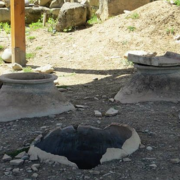




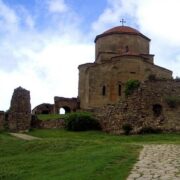
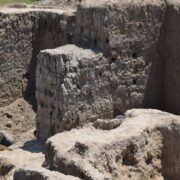
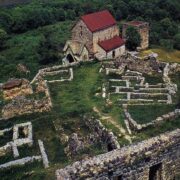



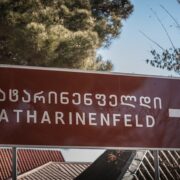

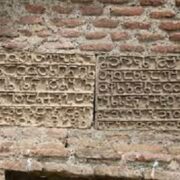
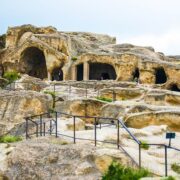


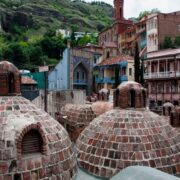



Tour Reviews
There are no reviews yet
Leave a Review